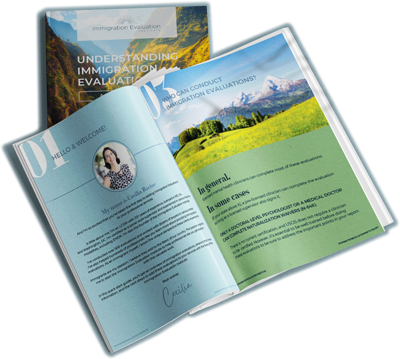What do you want to learn more about?
International Women’s Day 2023: #EmbraceEquity

International Women’s Day (8th March) is a day for us to join voices with people worldwide and shout our message for equal rights loud and clear: “Women’s rights are human rights!”
International Women’s Day (IWD) is a chance to celebrate those who came before us, those who stand beside us now, and those who will come after.
It’s a day to celebrate women’s diversity and embrace their facets and intersections of faith, race, ethnicity, gender or sexual identity, or disability.
The theme for the day for 2023 is #EmbracingEquity, and it is such a vital topic to discuss in our line of work.
Exploring the Theme #EmbracingEquity
Although they’re often used interchangeably, equality and equity have separate meanings – and reflecting on this can support us when making decisions about how we support clients and others in the workplace.
- Equality means each individual or group of people is given the same resources or opportunities.
- Equity recognizes that each person has different circumstances and allocates the exact resources and opportunities needed to reach an equal outcome.
The IWD website has this excellent illustration to represent equity and equality in action:
Equality is great in some ways. For example, I’m sure you’ve heard about equal pay policies that exist in most organizations that ensure those working the same job role and completing the same tasks are paid the same salary. This ensures equality across pay for workers.
But when it comes to things like gender imbalances and the gender pay gap, equity needs to be considered. Many barriers in our society prevent women from moving up in the workplace. These barriers are exacerbated for migrant and ethnic women.
By focusing on equity in these circumstances, we start to see how women and different women are held back and prevented from gaining opportunities. It also allows us to see what needs to happen to provide the right resources and support to help them get onto a level playing field.
Understanding Equity From a Female Immigrant Perspective
Gendered inequality and its intersections with other forms of inequality remain a crucial barrier to the equitable social and economic participation of immigrant and refugee women throughout the U.S.
Immigrant women make up 13% of the female population throughout the States. Immigrant women come from all over the world, with the largest group being Mexico (25.6 percent), the Philippines (5.3 percent), China (4.7 percent), and India (4.6 percent).
Despite the significant numbers of immigrant women and their contributions to economic, social, and civic life, substantial areas of inequity both within and outside of health systems.
Gender, race-based discrimination, and sexual harassment remain significant barriers to immigrant women’s advancement in the workplace. Family violence against immigrant women is at least as prevalent as in the general population, with the added concern that immigrant women are less likely – and able – to access support early.
Immigrant women experience higher rates of anxiety and depression and perinatal mental health issues. Throughout the U.S., access to mental health services is inequitable due to language, cultural, and information barriers.
How to Build More Equity into Your Practice
Understanding what equity can look like in our practice and work with clients is a great place to start supporting everyone – and women in particular.
- Provide forms in different languages where possible.
It might seem simple, but providing forms in different languages can help provide a more equitable experience for clients with English.
If you’re confident with the language, you can create these yourself or work with translators to develop forms, guidance, and resources in the languages you work with most.
- Work with interpreters.
I’ve spoken about this before, but working with professional interpreters is a great way to add equity to your practice. It demonstrates to clients that you care about their understanding and think about the best ways to support them through their evaluation.
If you can’t find a professional interpreter for a particular language, you could build a referral community with other immigration evaluation professionals who speak various languages and refer clients who would benefit from being able to speak comfortably with someone in their first language. Sometimes providing an equitable experience means acknowledging someone else could provide a more supportive experience for a client.
- Keep certain appointment times available for different client groups.
Understanding the needs of our clients is a big part of creating equitable experiences. For example, single mothers might only be able to attend an appointment during daycare or school hours. Some might work long hours and need appointments outside of typical 9-5 pm office hours.
Taking this into account and keeping appointments at specific times freely available for those who need them is another way of acknowledging our client’s experiences and meeting their needs.
- Build your knowledge of equity and migrant experiences.
You’ve probably picked up on this from me, but I advocate for lifelong learning and development. We can always do more to build our knowledge and keep learning about the client groups we work with and how best to support them.
There are excellent resources on the IWD website to learn more about equity and equality. If you haven’t already explored them, my online courses are also a great way to upskill yourself on immigration evaluations.
Celebrating International Womens Day Together
Above all, International Womens Day is a chance to stop and celebrate the women who have made a difference in our lives.
I hope you find a moment to spend time with the women that matter to you on the day or throughout the week, acknowledge how far we have come, and celebrate everything they do that makes our lives and days so much better.
Happy International Womens Day, all!

I’m Cecilia Racine, and I teach therapists how to help immigrants through my online courses. As a bilingual immigrant myself, I know the unique perspective that these clients are experiencing. I’ve conducted over 500 evaluations and work with dozens of lawyers in various states. Immigrants are my passion, I believe they add to the fabric of our country.
related articles
Helping Immigrants Find Safety and Healing Through U and T Visas
As mental health clinicians, we possess a unique set of skills that can be a…
Expand Your Expertise: Recommended Trainings for Immigration Clinicians
The Immigration Evaluation Institute Comprehensive course is a great first step into the world of…
Ethical Considerations in Immigration Evaluations
The role of mental health professionals in immigration evaluations is fraught with unique ethical complexities.…
Join the Free
Immigration evaluation
therapists facebook group
Are you a therapist that conducts immigration evaluations?



